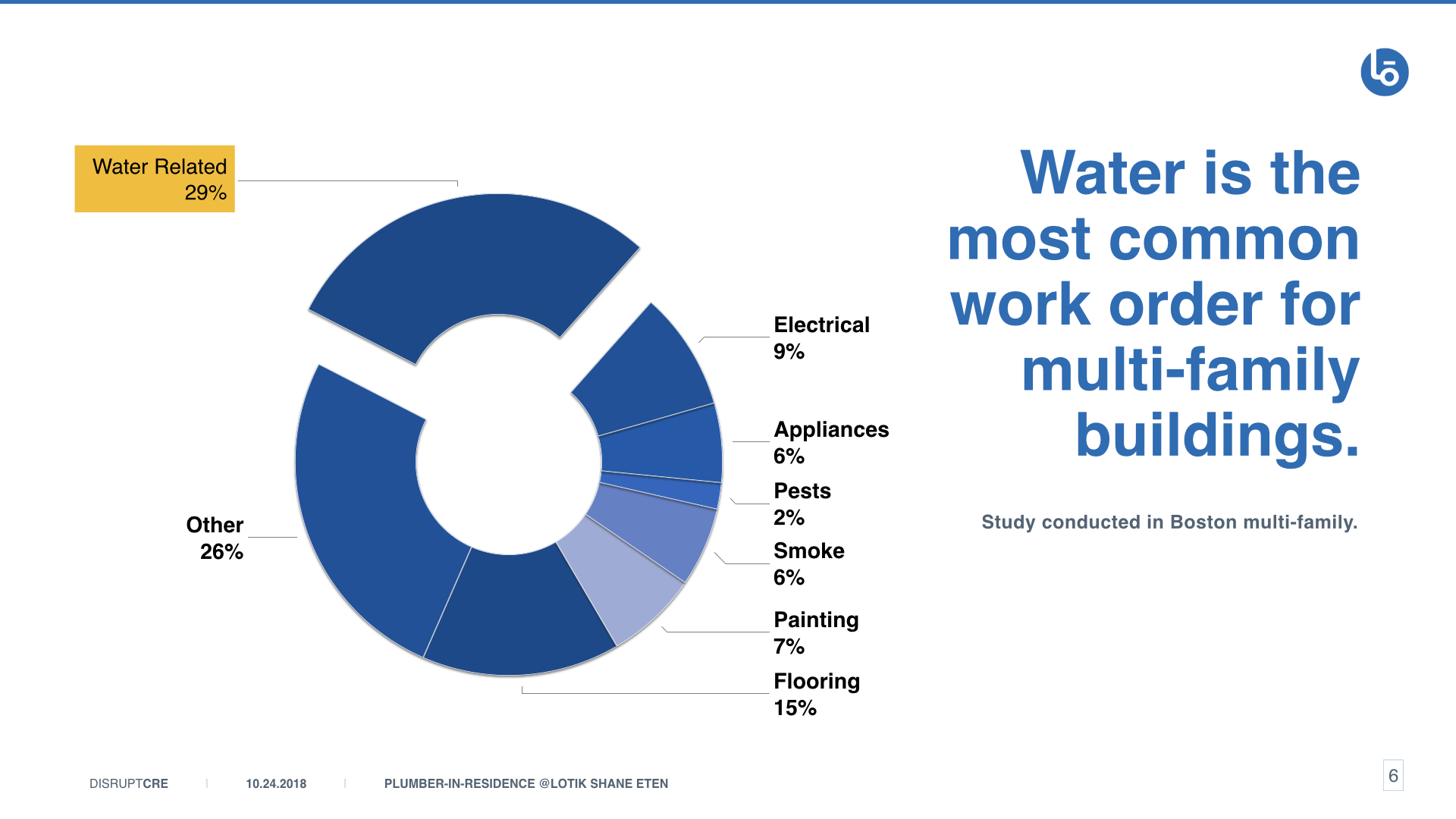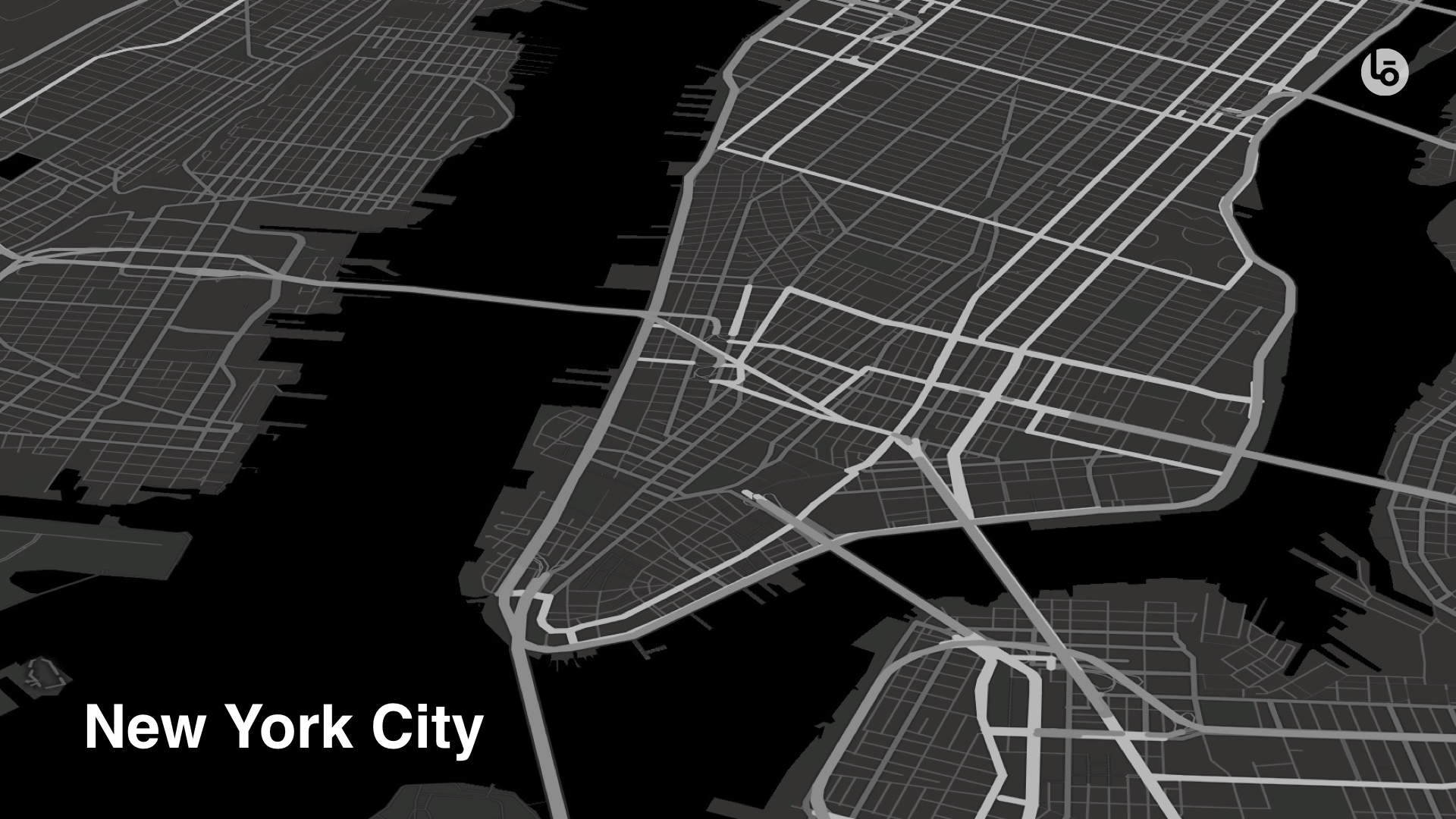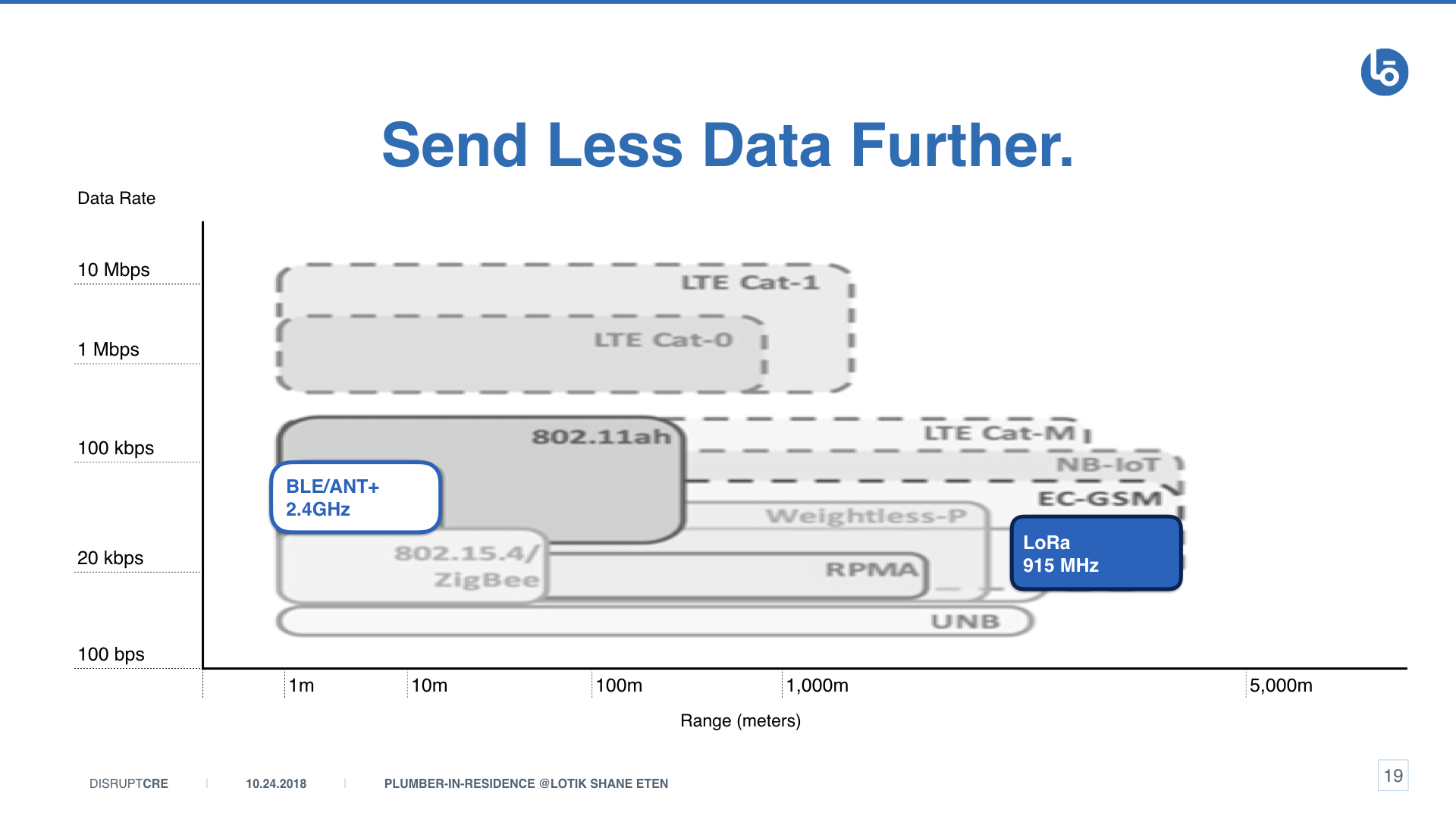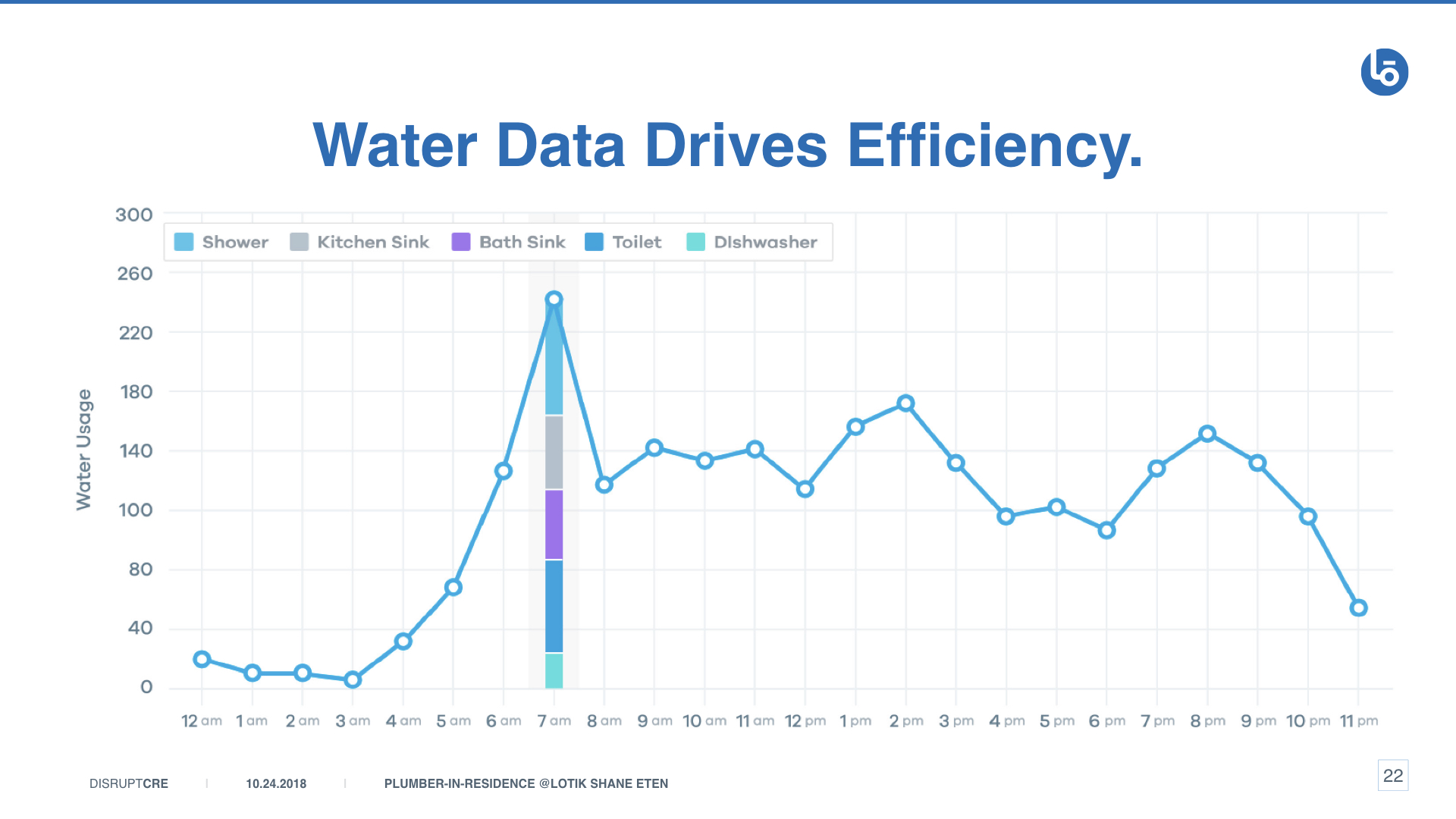What if your water pipes could talk? Shane Eten, CEO of Lotik discusses how water prices in NYC have tripled over the last few years and how water intelligences is saving residential developers millions of dollars each year.
VIEW PRESENTATION:






















VIDEO TRANSCRIPT:
My name is Shane Eden I'm the Co-Founder of Lotik. I'm a plumber in residence so I'm in training to listen to how pipes do talk so if we can hear them, we would understand a whole lot more. We believe that there's the ability to drive water efficiency in multifamily buildings. We believe that you could save around 40 to 50 percent on water costs in a multifamily building. But there is a lot of different reasons why this is possible and why it's important and when you first look at what the real liability is here it's not only just water cost it's water damage and there's a lot of things going on. It's amazing that we know more about the data that we use on our cell phone than we do about how much water we use. So for a multifamily building owner, surprisingly, water is their number one utility cost. This is a study done in 2005 in Minnesota. So I'm going to get to that number the 305 for water per apartment a little bit later. It's also the highest maintenance costs for a multifamily building.
In New York City, water costs have tripled since 2000. So that graph you saw earlier for the 308 water costs have now tripled which is around nine hundred dollars per apartment and none of the other costs have gone up.
We saw the same thing happening with electricity prices in the late 1970s. You see this curve right there, electrical sub metering started in 1985. So a lot of this is happening. We believe that water sub-metering is going to start to happen in New York City and it already is. It's not only expensive now but it's going to get a lot more expensive. So it's not just the water that we're using, we have quite a bit of water in New York City, but we have to then treat it. So if water is used inefficiently it then goes to a wastewater treatment system the taxpayer dollars are paying for it. We talked to a lot of building owners and they basically just think it's a tax. And what's fascinating about the building is you have a 600 unit building and you have one main meter and you have no other information. So when your water costs go up there's nothing you can do about it.
Surprisingly in California most of the water is used by farmers in New York City most of the water is used by multifamily buildings. So how do we apply something like this? We would argue that it's a lot easier to install a water submeter or do something new when it's for a new building, but 100 percent of the market right now is the buildings that already exist and the older buildings are what used the most amount of water. So what's difficult about water sub metering is that these buildings are built on stacked risers. So unlike electricity where there's one place or one panel that you can actually put a sub meter, you'd have to put it in six different locations on six different pipes so you can't just install one meter to understand what's going on. If you could understand what was happening at the fixture level, so tell me what's happening with the toilet or with the shower, you understand if there was a leak you would then drastically reduce the amount of insurance claims for a building and therefore insurance costs. And you would drastically reduce the amount of water that was actually being used.
With no transparency at all. The bar is set very low.
So how do we do this? It's almost like imagine if you could create a FitBit for a pipe.
So typically a toilet is sold to last for 20 years. What if you could embed an operating system into toilets so that you could upgrade the toilet? You could actually understand what was happening and a toilet is very easy to understand if you just listen to it. So what if you could create a Fitbit for a pipe? I spend a lot of years doing this. We've been working on it for four years.
We've been financed by Samsung and we found some very interesting findings here. Most of the time it's installed closer to the toilet so it's on the supply line. We have an accelerometer in there it's battery operated.
The key here is when you go into someone's apartment you want to make sure that you don't have to go back in and you want to make sure you're not there for a very long time. That's something that we learned over time but a leaky toilets very easy to identify.
All we're doing is tracking the amount of water that's being filled in a toilet so, when is toilet filling? And it doesn't matter how the leak occurred as long as it's basically an activity tracker and if you have an entire building you have 600 units and you know you have a leaky toilet. The research says that one in five toilets is leaking, we found that usually like two and five toilets is leaking. So just identify the places where when a pipe is talking and it's talking a lot, that's when you should definitely listen.
In the future we see embedding this stuff into every single picture. So imagine installing a building you commission the plumbing system for the first time and you have all green lights a lot of the insurance cost associated with water damage happens really really early on when a plumbing system is first installed.
So what did we learn doing this? Doing wireless in this type of environment is very very tough especially when you're in a bathroom. So a bathroom has glass, it has porcelain, and it has cabinets, so you go underneath the sink. You put a wireless system in there. You then closed the cabinet door you then closed the bathroom door. We need to figure out a way and everyone does need to figure out a way how to train how to send data a really long way in these places. We also realize that you can't have a gateway or a hub and connected the Internet in every single apartment. This has to be like to call it the silent censor. Had the building owner install it very very quickly but have a gateway that can be installed anywhere in the building. So instead of a gateway to every apartment we can now send data to twenty five floors. We did this by doing machine learning.
So in order to get data to listen to pipes we have customers but you don't want to necessarily go in there when you don't have a solution that works well. But I would suggest for a lot of building owners, letting new technology companies come in and actually collect data in the building is very important. So we looked at the numbers and Airbnb’s are very cheap so we would rent an Airbnb and sit there and hang out next to the plumbing systems which allowed us to collect all the data and then build the machine learning model on the actual sensor so that we're only sending the data that we need to and we can send it a lot further and a lot of times in certain industries. It's the language that we're talking about. So when I first started to dive into this as plumber and residence, I still do not know what a cubic foot is. I think a gallon is even hard to understand.
So instead of saying cubic feet, why is this not about time the tenant can't control how how often or or how much volume is coming out of their shower or their toilet. They can control how many times they flush and how long they turn the shower on for.
So we believe that in the future it will be based on time and so that you can actually comprehend it so someone can actually change their habits if they knew if they took a five minute less shower. And most importantly is that data when you can capture this and you can actually listen to the pipes you start to see a cadence of the buildings so you can tell when people are waking up, you can turn your heat on a little bit later. So this data is not just a real physical act. Someone has to go to the fixture and turn something on. And if someone is not there and there's water flowing we should know about it so we can stop it. Thank you very much.


